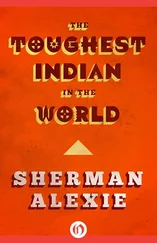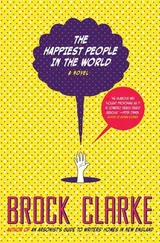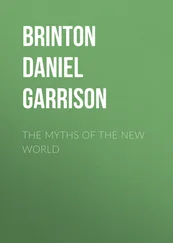He paused, then said the words that drained the capitalist-realist defeatism out of me and carried me halfway back to adolescence.
‘Utopias aren’t chimeras, they are the most noble dreams that people have. Dreams that through struggle can and must be turned into reality.
‘The dream of peace: not the peace of cemeteries, but the peace of equality. As Gandhi said, “peace is not just the absence of violence but the practice of justice”: the dream that natural resources and the riches the worker produces will come back to him, instead of being usurped by a minority. At this moment, a few rich people hold the riches that would feed sub-Saharan Africa, that is, 800 million human beings. The dream of equality; the dream that housing should belong to everyone, because you are a person, and not a piece of merchandise to be speculated with. The dream that banks should disappear, that natural resources like energy shouldn’t be in the service of multinationals but in the service of the people.
‘All those dreams are the dreams we’d like to turn into realities. First, in the place where we live, with the knowledge that we’re surrounded by capitalism everywhere; later, in Andalusia and around the world.’

2
The Story in the Soil
En cada barrio, en cada ciudad, en cada pueblo, en cada comarca, ahora más que nunca, seguimos en pie .
[In every district, in every city, in every village, in every region, now more than ever, we keep standing.]
Poster for 4 December 2012 memorial to Manuel José García Caparros
Early evening on my first night in Marinaleda, we pulled up and parked opposite Antonio’s house – the only house in the village where rooms can be rented, for the princely sum of fifteen euros a night. The front door was locked and the shutters were down, so we stood outside on Avenida de la Libertad, wondering what to do. Slowly a white van crawled towards us, with two megaphones attached to its bonnet, one facing right and one left, announcing the same recorded message over and over again: there would be a general assembly at 6.30 that evening – half an hour hence, in fact. In the old days they did the same thing, but instead of a car, the message was transported around the village on a bicycle.
So we walked the five minutes along the main road to the trade union bar, known as the Sindicato , where middle-aged men were pouring themselves whisky from the bottle and chewing sesame seeds. Eventually they drifted through the back door in the bar to the big hall, where the general assemblies take place. It was full, and busy, and bustling with small children to-ing and fro-ing and chirruping, but the meeting was characterised by a sombre tone – the only topic being the serious threat to the farming subsidy the village had come to rely on. Sánchez Gordillo was nowhere to be seen. In any case no resolutions were being proposed or passed; it was just a grim update on how little money was coming in from the regional government in Seville.
The Sindicato hall has a large stage for concerts and other performances, but no one was up there. The assembly consisted of some 400 people sitting on fold-out chairs, taking it in turns to grab the microphone at the front, or just shouting out their comments or objections. Above their heads, the permanent backdrop to the stage is a grand painting covering almost the entire wall, depicting three farm labourers boldly striding out from the fields, backed by a whole village of comrades. The contrast between the image and the reality of the situation was the first hint I got that la crisis was posing problems for utopia, too. The disjunction between the disquiet in the room and the proud, confident figures in the painting was striking. At the end of the assembly, Councillor Gloria Prieto Buendía, standing in for Sánchez Gordillo, announced in a slightly brighter tone that there were still some seats on the bus leaving in the morning for Malaga, to attend the annual rally for Andalusian workers’ liberty and to lay flowers at the shrine to Manuel José García Caparros.
Thirty-five years previously, on 4 December 1977, only two years after Franco died, during the uneasy transition to parliamentary democracy, there were mass demonstrations across Andalusia for regional autonomy. Millions had filled the streets of Spain’s largest region, in the cities of Seville, Malaga and Granada, in the towns and in the villages. Caparros, an eighteen-year-old factory worker, attempted to raise the still-banned green-white-green tricolour of Andalusia on Malaga’s city council building and was shot dead by the police. Ever since, 4 December has been commemorated in Andalusia, and poor young Caparros has been one of its principal martyrs.
The following morning, twenty or so people climbed onto the bus outside Marinaleda town hall, almost all middle-aged women, chattering away excitably as friends do when on an excursion. It felt a bit like a school outing. Three young men in their late twenties were sitting at the back of the bus, rather more coolly, and there was space at the back, so I joined them there. They were Mosa, one of the village’s handful of Senegalese immigrant workers, a tall man with a cheeky smile and a mop of braids; Raúl, a sinewy, stubbly guy who would normally be working in the fields, but had come along to help film the rally, and finally Paco, a dedicated Sánchez Gordillo loyalist who worked for Marinaleda TV and, as I should have guessed from his black hoodie and ponytail, played in the village’s premier anarcho-communist ska-punk band (there is only one). In a rather un -marinaleño move, the band are called Molestando a los Vecinos , which translates as Bothering the Neighbours.
Temperatures had reached the unbearable heights of forty-nine degrees Celsius earlier that year. As we wound south through the Andalusian countryside towards the coast, we passed fields packed with solar panels, huge blue rectangles tilted on stilts, standing in rows like Easter Island statues, folkloric gods saluting the new religion. The Andalusian government has been slow in acknowledging the new reality of unpredictable rainfalls and ever-hotter summers, but the farmers have certainly noticed it – it’s already messing with the harvests, and doing so in an economic period when they can ill afford to absorb more disruptive outside influences.
As we passed by the myriad small pueblos that populate the south, I showed the young men an obscure old pamphlet I’d found about the village from 1980, entitled Marinaleda: Huelga de hambre contra el hambre , the ‘hunger strike against hunger’ that had taken place before they were born. They flicked through it, amused to see a few familiar faces and names. ‘That was the last crisis,’ said Raúl. So what comes out of this crisis, I asked – are more Marinaledas possible now? Mosa smiled a sceptic’s smile and apologetically demurred – this strange town that he’d come to know and love was a one-off. ‘Why should it be?’ protested Paco. ‘In a town of this size, it is entirely possible. I don’t know if it’s possible in a big city …’ The others nodded. ‘But if other pueblos start their struggle now, imagine what they can be in thirty years’ time. It’s taken more than thirty years in Marinaleda – that’s older than any of us.’
After an hour and a half of idle chit-chat about la crisis and football, we were dropped off in Malaga city centre and trooped along in the dazzling winter sunshine to the site of the rally. On a fiendishly windy street corner, the protesters had gathered outside a branch of the BBVA bank, where a large estuary meets a dual carriageway. It was exposed, cold, and very noisy. The green and white flags of Andalusia were already in flight, and individual groups posed with their flowers under a slightly dented metal plaque to the martyr Caparros. Some had wrapped themselves in the flag of SOC-SAT, the left-communist Andalusian trade union representing field labourers since the late 1970s, the union that was the vessel for all of Marinaleda’s many struggles and victories.
Читать дальше













